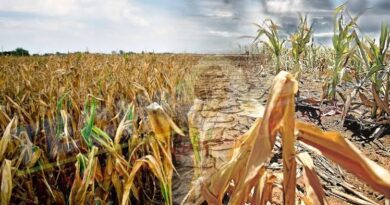Silvicultural Systems: Definition and Importance
Specifically, silvicultural systems derive from the strategies of sustainable forest management. The main focus of the systems is the creation and maintenance of pure, even-aged stands of single tree species in forest plantations, to meet the diverse needs and values of both the land-owners and the larger society.
The systems involve regeneration strategies and yield regulation before the subsequent sale, harvest, and extraction of plantation species for man’s use.
Silviculture is based on the principles of forest ecology and ecosystem management; it is more of the imitation of natural processes of forest growth and development than a substitution for them. The goal of silviculture is the creation and maintenance of pure, even-aged stands of single species of trees.
Silvicultural Systems

These are integrated schemes covering both intermediate and reproduction treatments that help to maintain pure, even-aged stands of a single tree species.
Significant biological and economic considerations in these systems include desired uses of land, kinds of products and services desired, prospective costs and returns of the enterprise presented by the management of the stand, funds available for long-term investment in stand treatments, harvesting techniques, harvesting equipment, reduction of losses from damaging agencies and the natural requirements that must be met in reproducing the stand and fostering its growth.
The systems are:
1. Regeneration
This is the act of renewing tree cover by establishing young trees naturally or artificially, after removing the previous stand/forest. The method, species, and tree density are chosen to meet the goal of the land- owner.
Forest regeneration practices include changes in tree planting density through human-assisted natural regeneration, enrichment planting, reduced grazing of forested savannas, and changes in tree provenance or species genetics.
Human-assisted natural regeneration is the establishment of a forest age from natural seeding or sprouting after harvesting through selection cutting, shelter (seed-tree) harvest, soil preparation, or restricting the size of a clear-cut stand to secure natural regeneration from surrounding trees.
Enrichment planting is increasing the planting density, plants/ha in an already growing forest stand. There are five different regeneration methods, namely
2. Single-Tree Selection
This involves the removal of typically large and valuable specimens from the overstorey and creating a gap in the canopy that stimulates the death of an old-age tree.
It is an even-aged harvest method most suitable for regenerating shade-tolerant trees and can be very difficult to implement in dense stands and may lead to residual stand damage.
3. Group Selection
This is an even-aged regeneration method most desirable for regenerating shade-intolerant tree species.
Residual stand damage is minimized by directional felling of trees. Also, foresters can select across the range of diameter classes in the stand, and this helps to maintain a mosaic of age and diameter classes.
Read Also: Economic Importance of Forests and Forest Products
4. Clear-Cut
This is an even-aged regeneration method that can employ either natural or artificial regeneration.
Clear-cutting can be biologically appropriate with species that typically regenerate from stand-replacing fires e.g. lodgepole pine (Pinus contorta). Alternatively, clear-cutting can increase species richness on a stand with the introduction of non-native and invasive species.
However, it can prolong slash decomposition, expose soil to erosion, impact the visual appeal of a landscape and remove essential wildlife habitats.
5. Seed-Tree
This is an even-aged regeneration method that retains widely-spaced residual trees to provide uniform seed dispersal across a harvest area. It is most suitable for light-seeded species and those not prone to windrowing. In this method, 5-30 seed trees/ha are left on site to regenerate the forest.
The remaining trees are left on site until regeneration is established after which they can be removed. Re-entry of cuttings to remove the remaining seed trees is not always economically viable or biologically desirable. The disadvantages are in clear-cutting.
6. Shelter wood
This is a regeneration method involving the removal of trees in a series of three harvests, namely preparatory cut, establishment cut, and removal cut. The objective of the method is to establish new forest reproduction under the shelter of the retained trees.
Unlike the seed tree method, residual trees alter the understorey environmental conditions such as sunlight, temperature, and moisture that influence seedling growth.
7. Intermediate Stand Treatments
These are aimed at regulating the yield and determination of allowable cuts. The treatments are;
1. Release Treatments
These include weeding (implemented during the stand’s seeding stage to remove or reduce competition from herbaceous species or woody shrubs); clearing (release of select saplings from the competition by overtopping trees of comparable age and enhancing the establishment of the desired tree species and stem quality) and liberation cutting (releases tree seedling or saplings by removing older overtopping trees).
2. Thinning
This is aimed at controlling the amount and distribution of available growing space. Its advantages are altering stand density, influencing the growth, quality, and health of residual trees, helping to capture tree mortality, and culling the commercially less desirable, usually smaller, and malformed trees.
Thinnings are not aimed at establishing a new tree crop or creating permanent canopy openings. However, ecological thinning (i.e. thinning aimed at increasing the growth of selected trees to enhance the development of wildlife habitats e.g. hollows) is a new approach to landscape restoration for some types of eucalypt and woodlands in Australia.
Common methods of thinning include low thinning (thinning from below /German thinning); crown thinning (thinning from above/French thinning); selection thinning (thinning of dominants/Borggreve method); mechanical thinning (row/geometric thinning); and free thinning.
3. Pruning
The removal of the lower branches of the young trees to clear knot-free wood which can subsequently grow over the branch stubs.
Such lumber has a higher value than knotty wood. It is an extensive practice in Radia tapine plantations of New Zealand and Chile. It is being gradually replaced by the Finger joint technique of producing lumber and moldings.
Read Also: Strategies for Sustainable Forest Management
Read Also: Importance Of Green Farming









